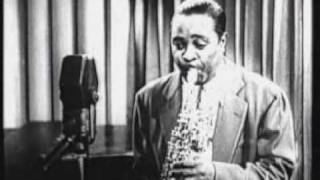| You are not logged in. | login to customize your own personal play list |
“Jack, You’re Dead!” by Louis Jordan and his Tympany Five |
| United States Federal Trade Commission forbids anyone under 13 from viewing these music videos! |
| You are not logged in. | login to customize your own personal play list |
“Jack, You’re Dead!” by Louis Jordan and his Tympany Five |
| United States Federal Trade Commission forbids anyone under 13 from viewing these music videos! |
 |
 |
 |
 |
You need Flash player 8+ and JavaScript enabled to view this video.
|
 |
 |
   |
 |

song info “Jack, You’re Dead!” by Louis Jordan and his Tympany Five is an R&B song from 1947.
Artist: Louis Jordan and his Tympany Five Genre: R&B jump blues Lead Vocals: Louis Jordan Saxophone: Louis Jordan Date:: 1947 This song is the number nine (9) song of 1947 according to Digital Dream Door’s Adam. Number of listens: 27172Current rank: 1328 (updated weekly) Highest rank: 1224 (play the video all the way through to register a vote for this song) Commentary: Translations courtesy of Apple and Google. |
||
Summary quotation from Wikipedia:
“Jack, You’re Dead” is a 1947 single by Louis Jordan and His Tympany Five. The single went to number one on the R&B chart for seven weeks . The B-side of “Jack, You’re Dead”, a song entitled, “I Know What You’re Puttin’ Down” reached number three on the R&B chart.
—from Wikipedia (the Wikipedia:Text of Creative Commons Attribution-ShareAlike 3.0 Unported License applies to Wikipedia’s block of text and possible accompanying picture, along with any alterations, transformations, and/or building upon Wikipedia’s original text that ThisSideofSanity.com applied to this block of text)
The Americans with Disabilities Act (ADA) and U.S. Government Section 508 of the Rehabilitation Act of 1973 require that web sites provide transcripts of audio for the deaf.
We will be adding lyrics to all songs as fast as we can. Please be patient.
Anastasija: Jack, Youre Dead! is Julie’s favorite song.
To submit a comment, use the form below:
Please use the form (with the delay for a human to inspect it) because this website is attacked by more than 20 spam attempts per minute. The only way to keep you safe from the spam is by having human review.
 |
  |
|
If you spot an error in fact, grammar, syntax, or spelling, or a broken link, or have additional information, commentary, or constructive criticism, please contact us.
Copyright © 2014 Milo. All rights reserved. Todos Derechos Reservados. The copyrights on all source code and the data base belong to Milo and are used on this web site by permission.
The source code is at OSdata.com, released under Apache License 2.0.
Copyright 2012, 2013, 2014 Milo
Licensed under the Apache License, Version 2.0 (the “License”); you may not use this file except in compliance with the License. You may obtain a copy of the License at:
http://www.apache.org/licenses/LICENSE-2.0
Unless required by applicable law or agreed to in writing, software distributed under the License is distributed on an “AS IS” BASIS, WITHOUT WARRANTIES OR CONDITIONS OF ANY KIND, either express or implied. See the License for the specific language governing permissions and limitations under the License.
Enjoy the This Side of Sanity website Twitter feed.
Enjoy the This Side of Sanity Twitter feed.

|
player artwork by michaelm